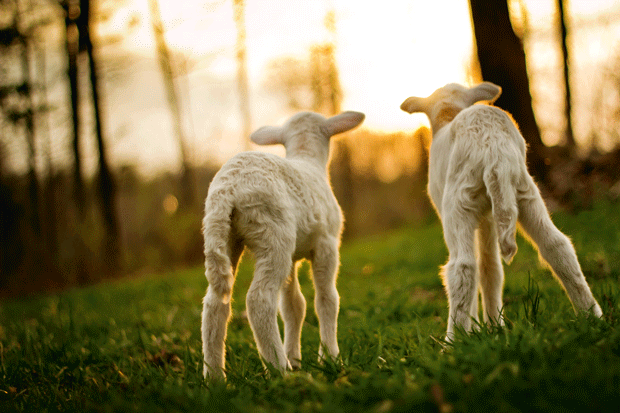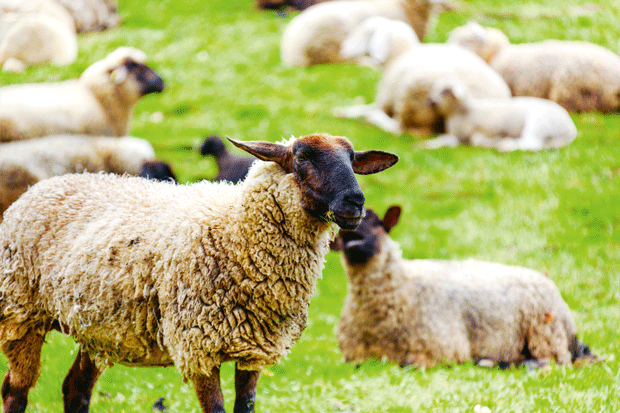How to look after your sheep this summer

Ensure your sheep are the happiest healthiest they possible can be this summer with these helpful tips:
WORDS: DR CLIVE DALTON
It’s time to start tidying up the flock, and your main priority is to wean lambs before it gets dry as their mothers will have stopped milking and lambs will now be competing for the same feed.
Lambs need the best feed on the farm, but when it gets scarce it’s time to sell as many as possible while prices for prime lambs are good before Christmas. Also, if the prime trade is good, the chances are that the store trade will follow for a while before buying stops when everyone sees pastures drying up. You can’t grow lambs on dead grass.
It might be tempting to keep late-born small lambs (which inevitably are twins or triplets) with the idea that they will grow and catch up over summer. But research shows that generally they won’t: they may be permanently stunted, you will need to spend more on drench and fly treatments, and they will need more of your precious feed reserves. It’s been proven to be economically better to sell them early and accept the first loss before putting more money into them. Once the surplus lambs are off the place, and only the replacement ewe lambs are left, it’s time to go through them to check teeth, udders and body condition. If a ewe didn’t rear a lamb to weaning, they should be first off to the saleyards.
Normally ewes are ‘cast for age’ at the age of five, but if they pass inspection, then they will be good for another season and should produce twins at least. Another priority is to get the wool off ewes (and lambs) for the sake of their welfare. Don’t expect to make money off this wool. Wool prices have improved this season so you may think it’s worth putting effort into its preparation for sale if you want to sell it yourself, but for most people, it’s usually less hassle to let the shearer take the wool for nothing. The Sheep Welfare Code says that sheep must be shorn once a year. Wool needs to be shorn when it’s no longer than 100mm, which means shearing twice a year for strong wool breeds like Romneys and Coopworths. Sheep in the North Island are now usually shorn pre-mating in autumn and then mid-late winter before lambing. No chemicals should be applied to sheep in
the 50 days before shearing. All dirty sheep need to be dagged before shearing, and you’ll have to come to some arrangement with the shearer as their union rules consider dags a health hazard.
Ask about dagging when you book the shearer as hard dags blunt combs and cutters, and is done with separate gear. If you’re selling your wool, make sure it’s properly sorted as the best price is for the main body wool. It needs to be free from short bits and dung-stains, and there should be no raddled wool or vegetable rubbish in it. A major problem in recent seasons has been the increase in thistle heads in wool, a major problem when the wool is carded. Lambs only produce about 1kg of wool but this season it has increased in price. But even if you’re not selling it, it’s still worth getting their wool off as it helps prevent blowfly attacks, especially if you also apply a preventative product around the crutch and along their back. You need to be constantly on the lookout for dirty oily patches on the wool and lambs trying to nibble these areas to stop the itch of them being eaten alive. The Aussie green blowfly is active very early in the season, as soon as things warm up, and stays active late into autumn. Lambs can get dirty from rubbing against their daggy mothers when they are yarded so be aware of that.
The advertising and promotional pressure to drench ewes and lambs so you can claim ‘specials’ like Christmas hams is relentless. Always talk to your vet about drenching and base any decision on a Faecal Egg Count (FEC) so you know what the worm load is. There will be a wide range of eggs per gram of faeces (epg) in a mob, and vets take 500epg as a trigger to drench the mob. But unless the whole mob is up in the thousands, and the sheep are not thriving, don’t drench them. Ewes should not need drenching because their natural immunity protects them. Current best practice is to delay drench resistance by always leaving 20% of good lambs in a mob undrenched so that they breed worms that are killed by drench. These worms are said to be ‘in refugia’ which allows non-resistant worms to mate with resistant ones, hopefully slowing up the advance to total resistance when your farm can’t run sheep.
Rams may go out in autumn but now is the time to sort out what rams will be needed. Remember, the ram is half the flock so money spent on good rams is an investment. If you want to keep a ram for many seasons, make sure he does not mate any of his own daughters, which means keeping them separate after they are 3-4 months in age; a well-grown hogget (around 45kg) will come on heat. Get rid of all lambs with testicles before Christmas as they will mate ewes too. In the North Island, ewes will start cycling in December if they (and the rams) are in good body condition, so keep rams separate if you don’t want winter lambs when feed is short. Rams in January (especially Poll Dorset) will start to ‘pink up’ and smell strongly, which stimulates oestrus in the ewes through their pheromones in the wool grease.
Rams are best shorn well before mating, and any kept from last year will need a thorough examination by a vet. They should have no abnormalities in their testicles, prepuce or penis.
Don’t use chemicals on ewes or rams for six weeks either side of joining with the ewes, as it could affect fertility. When pastures dry off, it’s Facial Eczema (FE) time again and the problem is spreading to wider areas. Prevention with zinc needs to start on January 1 and continue well into May. Check with your vet about the best method for your flock. A zinc bolus (which lasts a month) is an easy way to treat sheep, but check spore counts from local vet clinics as extra oral drenching may be needed. Don’t give sheep more than three boluses over a season as this can risk zinc toxicity. If you are serious about keeping sheep long term, find a breeder with FE-tolerant rams for sale. It’s another good investment.

11 SUMMER SHEEP TIPS
• Check the flock before Christmas and get rid of all sheep that will cost you time and money over summer.
• Wean all lambs and get some weight back on all your flock’s ewes for next autumn’s mating.
• Don’t keep small late-born lambs thinking they will grow – it’s been proven that this is not economic.
• Sheep need shearing when wool is 100mm long – don’t treat with chemicals in the 50 days beforehand.
• Book the shearer early and discuss wool options, especially about preparing it for sale. Thistle heads are a serious problem.
• Keep a constant watch for flystrike, especially on woolly lambs.
• Spending money on decent rams is an investment as the ram is half the flock.
• Don’t let any rams run with ewes all year – always decide on a mating date to suit spring grass growth.
• Don’t drench any sheep for worms without doing a FEC first. Discuss actions with your vet to avoid drench resistance building up.
• the FE risk starts on January 1. Check spore counts through your vet clinic, and don’t delay prevention.
• Stray dogs and rustlers are an increasing hazard for sheep on small blocks. Have a security plan for when you are.
Love this story? Subscribe now!
 This article first appeared in NZ Lifestyle Block Magazine.
This article first appeared in NZ Lifestyle Block Magazine.
